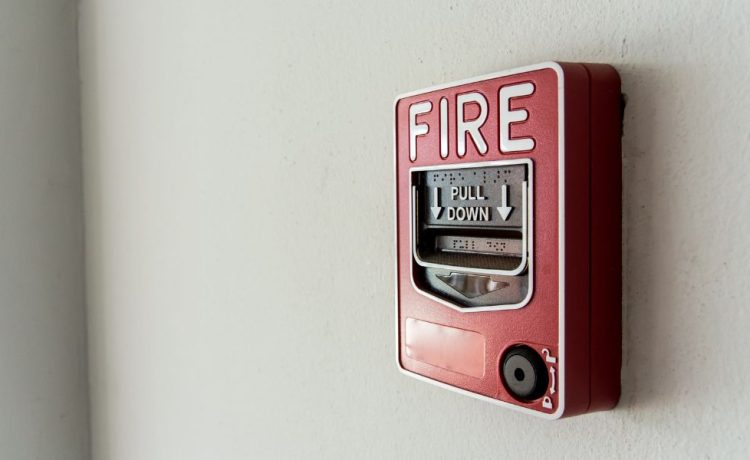When it comes to fire safety, being proactive is essential. While it’s important to have all the necessary equipment like fire extinguishers, smoke detectors, and alarms in place, it’s equally critical to have a clear, well-documented plan for responding to a fire emergency. This is where a fire service plan, also known in Germany as a Feuerwehrplan, plays a role.
A fire service plan is a comprehensive strategy designed to manage fire safety within a building or property. It outlines the specific actions that need to be taken during a fire, specifies designated evacuation routes, and ensures that all fire safety protocols are in place. Not only is this essential for protecting lives, but it also helps reduce the potential damage to property in the event of a fire.
What is a Fire Service Plan (Feuerwehrplan)?
The term Feuerwehrplan, which is commonly used in Germany, refers to a detailed document or set of instructions that outlines measures to be taken before, during, and after a fire emergency. While the term is specific to Germany, the concept is universal. A fire service plan is an integral part of any property’s fire safety strategy, ensuring that everyone—whether residents, employees, or visitors—knows exactly what to do in the event of a fire.
A fire department plan is not just a checklist of equipment and protocols; it’s a carefully crafted guide to ensure that every person inside the building knows how to respond quickly and efficiently to an emergency. The plan should be tailored to suit the specific needs of the building or facility, ensuring all relevant factors are covered.
Here are the key components typically included in a fire service plan:
1. Evacuation Procedures
Clear evacuation procedures are the cornerstone of any fire service plan. These procedures should include designated evacuation routes, stairwell locations, and emergency exits, ensuring that everyone knows where to go when a fire occurs. The evacuation routes must be clearly marked, free of obstructions, and easily accessible.
2. Fire Alarm and Notification System
A fire service plan outlines how the building’s fire alarm system operates. It should detail how occupants will be notified in the event of a fire, whether through alarms, visual indicators, or announcements. Knowing how to respond to alarms is essential for minimizing confusion and ensuring everyone evacuates promptly.
Assembly Points
After evacuating the building, it’s crucial for everyone to gather at designated assembly points—safe areas located far enough from the building to avoid potential harm from the fire. These points allow personnel to account for everyone and ensure no one is left behind.
The fire service plan should clearly define these locations, mark them on evacuation maps, and ensure that all staff and residents are familiar with the routes to these points. Regular reminders and drills should reinforce the importance of these assembly points to ensure swift and organized evacuation.
Emergency Contacts
An essential component of the fire service plan is a comprehensive list of emergency contacts, which should be readily available to all individuals within the building. This list should include phone numbers for the local fire department, emergency services, building managers, and key personnel who can be contacted in an emergency.
The plan should also specify procedures for contacting these authorities quickly and efficiently, ensuring that no time is wasted during a critical situation. Ensuring that everyone knows where to find this contact information can be vital in minimizing the impact of a fire.
Locations of Fire Safety Equipment
The fire service plan must include clear and precise instructions on where to locate essential fire safety equipment, such as fire extinguishers, fire hoses, sprinklers, first aid kits, and fire alarms. These should be placed in easily accessible and clearly marked areas throughout the building.
When fire safety equipment is strategically located and well-known to all building occupants, it can be accessed quickly and used effectively in an emergency. This readiness can make a significant difference in containing a fire before it spreads and mitigating injuries or damage.
Fire Safety Systems
The fire service plan should provide a detailed overview of all installed fire safety systems, including smoke detectors, sprinkler systems, fire-resistant doors, and emergency lighting. Each system plays a critical role in containing the fire and helping occupants evacuate safely. The plan should include regular maintenance schedules to ensure these systems are always operational.
For instance, smoke detectors need periodic testing to ensure they can alert people in time, and sprinkler systems must be checked for proper functioning. By keeping fire safety systems in top condition, the property is better prepared to minimize damage and ensure the safety of all occupants.
Training and Drills
Regular fire drills and safety training are vital to ensuring that everyone in the building knows what to do in the event of a fire. The fire service plan should specify how often fire drills will be conducted and who is responsible for organizing them. Training sessions should cover proper evacuation procedures, how to use fire safety equipment, and how to stay calm and focused during a real emergency.
Fire drills help familiarize everyone with the building’s layout and escape routes, making the process more efficient and less stressful when an actual emergency occurs. Additionally, the fire service plan should include instructions for training new residents or employees to ensure they’re prepared from day one.
Why is a Fire Service Plan Essential for Your Property?
Now that we’ve covered the components of a fire service plan, let’s discuss why it is crucial for any property, whether residential or commercial.
1. Protection of Life
The most important reason for having a fire service plan is to protect lives. In the event of a fire, every second counts. A well-thought-out plan helps people evacuate quickly and safely. Staff and residents should be trained regularly to familiarize themselves with the evacuation routes and fire safety procedures.
2. Legal Compliance
In many countries, including Germany, having a fire service plan is not just a good practice but a legal requirement. Property owners are often mandated to have a Feuerwehrplan in place to comply with fire safety regulations. Non-compliance can result in hefty fines or even the closure of a building. Ensuring your fire service plan meets local fire safety laws is vital to avoid penalties.
3. Minimizing Property Damage
A well-structured fire service plan is key to minimizing property damage during a fire by ensuring a quick, organized response. With fire safety equipment like extinguishers and sprinklers in place, fires can be contained before they spread. Operational systems, such as alarms and fire-resistant doors, help limit the fire’s reach, preventing significant damage.
Regular drills and training ensure everyone knows evacuation routes and how to use fire safety equipment, reducing confusion and delays. Acting swiftly, the fire’s impact is minimized, cutting down on repair costs and helping to restore normal operations faster.
4. Business Continuity
For businesses, a fire service plan is also essential for maintaining operations during and after a fire. If a fire causes damage to your property, a well-prepared plan can help minimize disruptions and reduce downtime.
It ensures that employees know exactly what to do, so they can evacuate quickly and safely, and it may also include steps for salvaging valuable data or assets.
5. Enhanced Insurance Coverage
Insurance providers often require proof of a fire service plan before offering coverage. Having a well-documented fire service plan can improve your chances of securing the best insurance rates. Moreover, in the event of a fire, having a plan in place makes it easier to file insurance claims and may speed up the process.
6. Community Safety
A fire service plan not only protects your property but also enhances the safety of the surrounding community. In bigger properties or complexes, emergency responders can use the plan to quickly access important details, such as the building’s layout and the location of critical fire safety equipment. This helps them respond more efficiently, potentially reducing the risk of widespread damage and ensuring faster, more effective firefighting efforts.
Conclusion
Whether you call it a fire service plan or fire service plan, having a detailed and well-organized fire safety strategy is essential for any property. A fire service plan ensures that everyone knows what to do during an emergency, helps protect lives, minimizes property damage, and ensures legal compliance.
Don’t wait until disaster strikes—make sure your property is equipped with a comprehensive fire service plan today. It could be the difference between a safe escape and a devastating loss.






